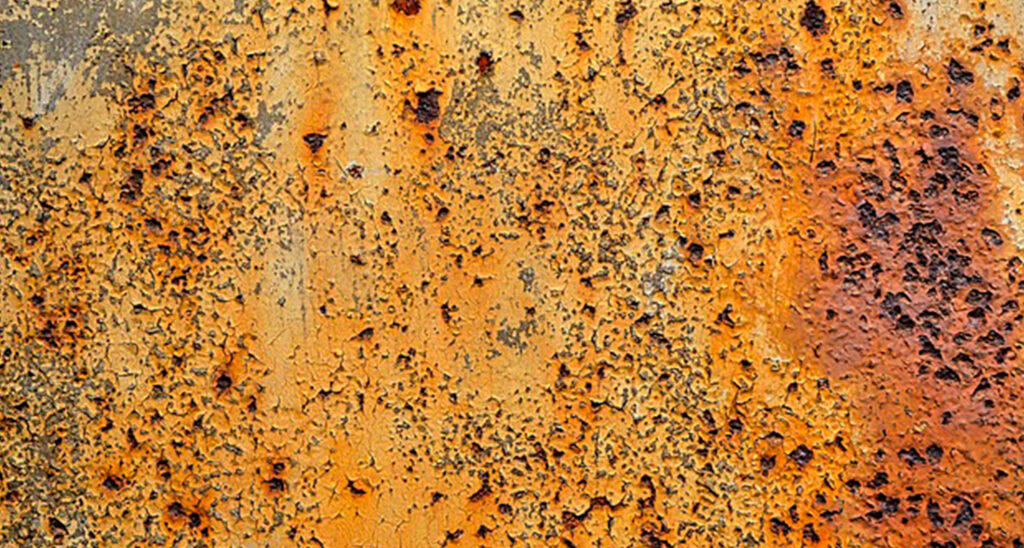The Man of Steel, aka Superman is a popular comic book character whose weakness is called kryptonite. Steel has its own kryptonite, and it is called rust.
Rust is a common and destructive problem that affects metal surfaces and structures, leading to weakened materials, costly repairs, and potential safety hazards. For household tools, vehicles, industrial equipment, or metal structures, preventing rust is essential for maintaining durability and performance. Rust forms when metal reacts with oxygen and moisture, creating iron oxide, which weakens the structural integrity of the affected material.
While rust is a natural process, it can be significantly slowed or even prevented with the right techniques and protective measures. Understanding the causes of rust and implementing effective prevention strategies can extend the life of your metal objects and structures, saving time, effort, and money in the long run. This article explores various rust prevention methods, from protective coatings to environmental controls, to help you safeguard your metal assets.
The Science Behind Rust Formation and Contributing Factors
Rust, scientifically known as iron oxide, forms when iron or steel is exposed to oxygen and moisture over time. This natural process, known as oxidation, causes the metal to break down, resulting in the characteristic reddish-brown flakes that weaken its structural integrity. The presence of water significantly accelerates the oxidation process, making rust formation more likely in humid or wet environments. Additionally, certain impurities and environmental factors, such as pollutants and acidic compounds, can further speed up corrosion.
Some conditions make metals more susceptible to rust than others. Coastal areas, for instance, pose a high risk due to the presence of salt in the air, which enhances the conductivity of water and speeds up the oxidation process. Similarly, regions that use road salts during winter experience increased rusting on vehicles, as the combination of moisture and salt creates an aggressive corrosive reaction. Industrial settings where machinery is exposed to chemicals or extreme weather conditions also see accelerated rust formation if proper protective measures are not taken.
Understanding the different stages and types of rust can help with early intervention. Surface rust, which appears as small, shallow patches of discoloration, is the easiest to manage and remove. However, if left untreated, it can progress to scale rust, which penetrates deeper and weakens the metal’s structure. The most severe form is penetrating rust, which corrodes entirely through the metal, leading to significant structural damage and potential failure. Regular maintenance and early rust prevention are key to stopping the progression of oxidation and preserving the strength of metal objects.
Effective Use of Protective Coatings and Sealants to Prevent Rust
Applying protective coatings and sealants is one of the most effective ways to prevent rust formation on metal surfaces. Paints, primers, and rust-inhibiting coatings act as barriers, shielding the metal from direct exposure to moisture and oxygen. These coatings are commonly used in automobiles, outdoor structures, and industrial equipment to prolong their lifespan and maintain their integrity. Many specialized rust-prevention paints contain corrosion-resistant additives that help slow down oxidation even in harsh environments.
Galvanization is another highly effective method used to protect metals, particularly in construction, fencing, and automotive applications. This process involves coating steel or iron with a protective layer of zinc, which acts as a sacrificial metal. If the zinc coating is scratched or damaged, it corrodes before the underlying steel, preventing rust from forming. Galvanized steel is particularly valuable in environments with high moisture exposure, as it significantly extends the durability of metal components.
In addition to paints and galvanization, oil- and wax-based coatings provide another layer of protection, particularly for tools, firearms, and machinery. These coatings repel moisture and create a water-resistant barrier that slows oxidation. Regular reapplication is essential for maintaining their effectiveness, especially for metal objects stored in damp conditions. By incorporating these protective coatings and sealants into a maintenance routine, metal surfaces can remain rust-free and structurally sound for years to come.
Controlling Environmental Factors
Environmental conditions play a crucial role in rust formation. Controlling humidity and moisture exposure can significantly reduce the risk of rust, especially in enclosed spaces such as garages, warehouses, and storage units. Dehumidifiers, proper ventilation, and silica gel packets help absorb excess moisture and maintain a dry environment.
In outdoor settings, covering metal objects or storing them in dry, climate-controlled areas minimizes exposure to rain, humidity, and fluctuating temperatures. Vehicles, for instance, should be parked in a garage or under a carport to reduce prolonged exposure to moisture. Additionally, keeping metal surfaces clean and dry prevents water from settling and causing rust.
For industrial and commercial applications, corrosion inhibitors and anti-rust sprays are often used to protect metal surfaces exposed to harsh environments. These chemical treatments provide an extra layer of defense against oxidation, especially in factories, shipyards, and construction sites where moisture and pollutants are prevalent.
Regular Maintenance and Cleaning
Routine maintenance and cleaning are essential in preventing rust. Dirt, grime, and debris can trap moisture against metal surfaces, accelerating the corrosion process. Regularly washing and drying metal objects, vehicles, and equipment help remove potential rust-causing agents.
For automobiles, washing the undercarriage is particularly important in winter months when road salt can contribute to rust formation. Applying a rust-proofing spray or undercoating provides additional protection. Similarly, tools and machinery should be wiped down and lubricated after use to prevent moisture buildup.
Inspecting metal structures and equipment for early signs of rust allows for prompt action before the corrosion spreads. Sanding down small rust spots and applying rust inhibitors can prevent further damage. By incorporating regular maintenance into your routine, you can preserve the integrity of metal items and avoid costly repairs.
Choosing Rust-Resistant Metals
Another way to prevent rust is by selecting rust-resistant metals for construction, manufacturing, and daily use. Stainless steel, aluminum, and copper are naturally resistant to corrosion due to their unique chemical compositions. These metals form protective oxide layers that prevent rust from developing.
Stainless steel, for instance, contains chromium, which reacts with oxygen to form a protective layer that prevents rust. This makes it an excellent choice for kitchen appliances, medical equipment, and outdoor fixtures. Aluminum is also resistant to rust and is widely used in roofing, automotive components, and aerospace materials.
In applications where rust resistance is crucial, using alloys or coated metals ensures longevity and durability. While rust-resistant metals may be more expensive initially, their long-term benefits outweigh the costs by reducing maintenance and replacement expenses.
Applying Cathodic Protection
Cathodic protection is an advanced rust prevention technique used in industries where metal structures are exposed to water or soil, such as pipelines, bridges, and ships. This method involves using a sacrificial anode or an external electrical current to prevent rust formation.
In sacrificial anode protection, a more reactive metal, such as magnesium or zinc, is attached to the steel structure. These anodes corrode instead of the protected metal, extending its lifespan. This technique is commonly used in water heaters, underground pipelines, and marine vessels.
Another form of cathodic protection is the impressed current system, which applies a controlled electrical current to neutralize corrosion. While this method is more complex, it provides long-term protection for large-scale infrastructure projects and critical metal structures.
Avoiding Prolonged Water Exposure
Water is the primary catalyst for rust formation, making it essential to limit prolonged exposure to moisture. Proper drainage systems, waterproof covers, and strategic storage solutions help keep metal surfaces dry.
Outdoor metal furniture, railings, and gates should be coated with weather-resistant sealants to repel water. In automotive care, waxing and applying ceramic coatings help create a water-resistant barrier that prevents rust development.
For industrial equipment and tools, storing them in moisture-free environments and using desiccants further minimizes rust risks. Taking proactive measures to reduce water exposure ensures that metal surfaces remain rust-free for extended periods.
Conclusion
Preventing rust requires a combination of protective coatings, environmental controls, regular maintenance, and material selection. By understanding the causes of rust and implementing effective prevention strategies, you can extend the lifespan of metal structures, tools, and vehicles.
Whether you are protecting household items, industrial machinery, or large infrastructure, rust prevention efforts save time, money, and effort in the long run. Investing in high-quality protective measures ensures that metal surfaces remain durable and corrosion-free for years to come. By taking proactive steps today, you can prevent rust from becoming a costly problem in the future.

